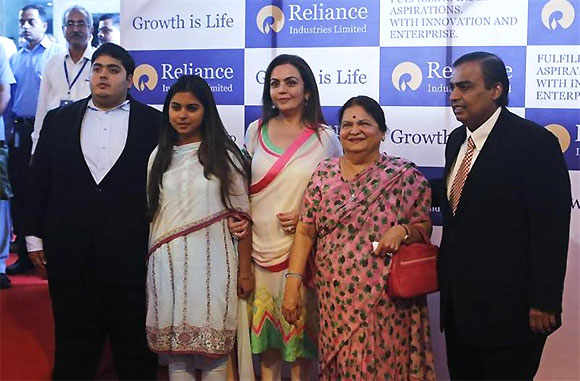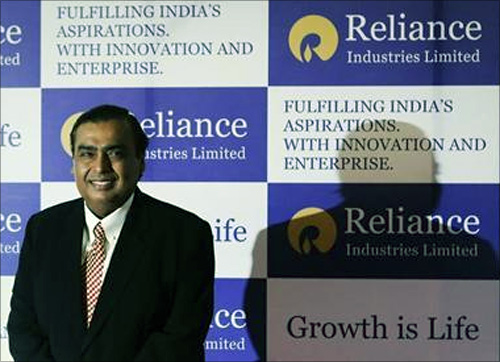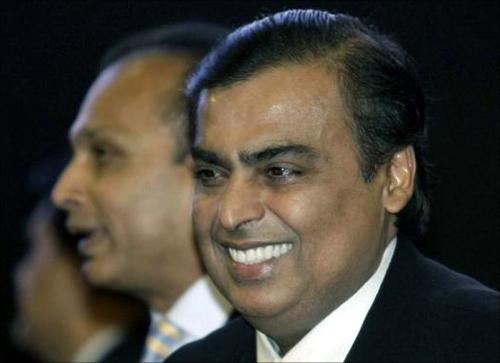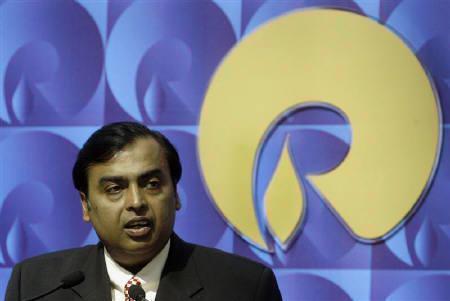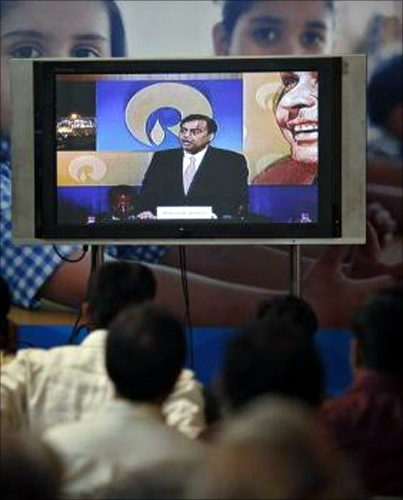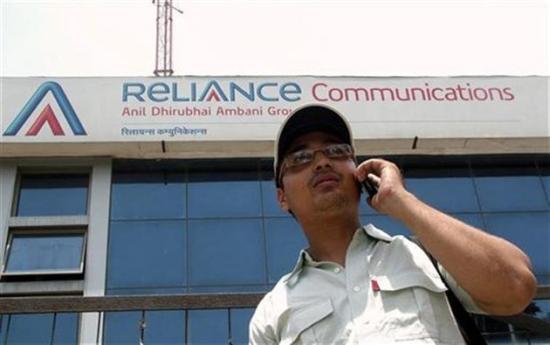 | « Back to article | Print this article |
How Ambani plans to revive the fortunes of Reliance Industries
When Mukesh Ambani announced earlier this month that Reliance Industries will spend Rs 150,000 crore ($27 billion) in the next three years, it was clear that he was attempting to revive the fortunes of the company which has slipped to the 4th position amongst the country’s most valuable company for the first time in almost a decade.
The company had lost the coveted pole position as its standalone operational profit (earnings before interest, tax, depreciation and amortisation, or Ebitda) declined to Rs 38,785 crore in 2012-13 from Rs 39,811 crore in 2011-12 and Rs 41,178 crore in 2010-11.
The decline in Ebitda came while the company was making large investments in non-core businesses such as shale gas, retail and telecom.
Now, the company plans to deploy a large chunk of its capital expenditure in the core businesses of refining, petrochemicals and exploration & production.
This, it hopes, will double its Ebitda in the next four years. Analysts expect these sectors to see an investment of $17 to $20 billion. “It is our belief that our new projects will come on stream as the global economy recovers and margins in our core businesses are on the upswing,” Mukesh Ambani, the chairman of Reliance Industries, said at the 39th annual general meeting of the company’s shareholders earlier this month in Mumbai.
Click NEXT to read more...
How Ambani plans to revive the fortunes of Reliance Industries
Apart from neglecting the core business, the company has also drawn flak for sitting on Rs 50,456 crore in cash and bank balances and another Rs 28,869 crore in current investments (on the consolidated balance sheet) at the end of 2012-13.
While the cash and investments boosted the company’s other income to Rs 7,867 crore, up from Rs 6,194 crore in the previous year, it also dragged the RoC, or return on capital, to 12.01 per cent in 2013-14 from 12.51 per cent in 2012-13 and 13.72 per cent in 2011-12.
RoC is the key matrix to determine a company's ability to give better returns on its capital through its businesses.
Funding the capital investment should not be a problem. The company generated net profit of Rs 20,879 crore in 2012-13 and Rs 19,724 the year before.
At a minimum average of Rs 20,000 crore, the company would generate additional Rs 60,000 crore in profit over the next three years. This added to the Rs 79,325 crore in cash and investments, the company is in a comfortable position to make a capital expenditure of Rs 150,000 crore in the next three years. Also, Reliance Industries’ consolidated debt is a comfortable 0.57 times of equity and that provides enough headroom for borrowing if required.
Click NEXT to read more...
How Ambani plans to revive the fortunes of Reliance Industries
Spending plan
The company has not shared the breakup for the $27 billion capital expenditure and it did not respond to a detailed email sent to ascertain its plans.
However, analysts’ estimates suggest that $17-19 billion will be invested in the core businesses and $8-10 billion in the non-core businesses including shale gas, telecom and retail.
“Reliance Industries’ AGM highlights the return of the investment cycle for the company which should double its Ebitda over the next four years,” says Vikash Kumar Jain, analyst with international brokerage CLSA.
The refining business of the company contributed about 77.4 per cent to its standalone gross turnover of Rs 431,115 crore in 2012-13 that included inter-segment revenues (The turnover of the company, excluding the inter-segment revenue, was Rs 371,000 crore in 2012-13. Reliance Industries does not provide the breakup of segment revenue excluding the inter-segment contributions).
This business is expected to see investments worth $4 billion in the next three years on the gasification project which is expected to enhance refining margins by substituting the use of high-priced imported LNG with syngas produced from low-priced pet coke.
With this, the refining margin of the company is expected to reach $11 per barrel from $9.2 per barrel in 2012-13, according to analysts’ estimates, despite the subdued outlook for global refining margins.
Click NEXT to read more...
How Ambani plans to revive the fortunes of Reliance Industries
The petrochemical business of the company is expected to see investments of $8 billion, which will expand its production capacity 66 per cent to 25 million tonnes per annum. This is the second largest business segment of the company with contribution of Rs 88,108 crore or 20.5 per cent to the gross revenue in 2012-13. Reliance Industries hopes to become the fifth largest petrochemical producer in the world with this investment.
Big profits
“We estimate a sharp increase in Ebitda of Reliance Industries’ petrochemical segment to Rs 23,500 crore in FY2017 versus Rs 9,200 crore in FY2013, led by full commissioning of the proposed expansion projects and gradual improvement in the margins,” says Sanjeev Prasad, senior executive director and co-head (institutional equities) at domestic brokerage Kotak Securities in his research report. Prasad expects more earnings from the exploration & production (E&P) business of the company.
“We expect Reliance Industries to benefit from an increase in gas production from the KG D-6 block, led by the development of satellite fields and the R-series discovery,” says he. The cumulative production from KG-D6 in 2012-13 was 2.91 million barrels of crude oil, 0.4 million barrels of condensate and 336 billion cubic feet (BCF) of natural gas, a reduction of 41 per cent, 43 per cent and 39 per cent, respectively, over the previous year.
The company attributed the fall in production to geological complexity, natural decline in the fields and higher-than-envisaged water ingress. The revenue from the E&P business declined by 35.8 per cent to Rs 8,280 crore in 2012-13. The company has discovered 18 gas fields in the KG-D6 block, of these only two (Dhirubhai 1 and 3) have been put to production. In February, the company announced that it will invest in excess of $5 billion under the KG D6 block enhancement plan in a series of projects to develop around 4 trillion cubic feet of discovered natural gas.
Click NEXT to read more...
How Ambani plans to revive the fortunes of Reliance Industries
This would have entailed a 60 per cent equity contribution from the company because it holds a 60 per cent stake (British Petroleum owns 30 per cent and Niko Resources of Canada holds the remaining 10 per cent).
But now Reliance Industries’ investment in E&P is expected to be $5-8 billion, depending on the government approvals of its plans submitted. This includes development of satellite fields (D2, D6, D19, and D22) and a new cluster discovered under the name R-Series. According to the approved declaration of commerciality, the Director General of Hydrocarbons has estimated 617 BCF of recoverable reserves from these satellite fields. The company also has other oil fields such as Panna-Mukta and Tapti, besides nine blocks in Gujarat.
<B>Non-core ventures</B><BR>
For the non-core businesses, the biggest investment is expected to go into shale gas in the US which comprises three upstream joint ventures with Chevron, Pioneer Natural Resources and Carrizo Oil & Gas and a midstream joint venture with Pioneer. The company has so far invested $5.7 billion in this business.
The Ebitda contribution of the US shale gas business to Reliance Industries’ consolidated bottom-line more than doubled to Rs 2,109 crore in 2012-13 from Rs 937 crore in the previous year. This business is expected to see $3 to $5 billion of investment in the next three years.
Click NEXT to read more...
How Ambani plans to revive the fortunes of Reliance Industries
In other non-core businesses such as telecom and retail, the company is expected to invest another $4 billion. Retail hit operational breakeven in 2012-13—almost seven years after starting operations.
Reliance Retail had 9 million square feet of retail space and a turnover of Rs 10,000 crore at the end of 2012-13. The business contributed Rs 78 crore to the company’s operational profit. Now, the company aims to quadruple its retail revenue over the next three years to Rs 40,000 crore with an investment of $1 billion.
Reliance Jio, the telecom venture of the company, is expected to see investments of $3 billion as it plans to launch its 4G wireless service in the next 12 months. The company had bought a 95 per cent stake in Infotel Broadband for Rs 4,800 crore in June 2010 after it had emerged as the sole winner for nationwide broadband for a fee of Rs 12,848 crore.
Reliance Industries agreed to pay the fee and its total investment in the telecom business has already touched about $4 billion. The company paid additional fee of Rs 1,658 crore this year to the government to offer voice calls on its existing 4G spectrum.
This month, the company also announced that it has signed a tower-sharing agreement with Anil Ambani promoted Reliance Communications for Rs 12,000 crore ($2 billion) following a similar agreement for sharing the intra-city optical fibre network for Rs 1,200 crore. Both the companies are also in talks for sharing the inter-city optic fibre network now to speed up the rollout of Reliance Jio’s services.
That is the most eagerly awaited move in India’s telecom sector.
